Introduction
Autism Spectrum Disorder (ASD) is a complex condition that affects individuals differently across their lifespan. Recognizing the signs of autism in adult women can be challenging due to social expectations and the ability to mask symptoms. However, awareness and understanding of autism in adult women are growing.
The prevalence of autism in adults is significant, with 1 in 45 adults in the U.S. diagnosed with ASD. Yet many remain undiagnosed or misdiagnosed, living without understanding why they experience certain challenges. Misinformation surrounding autism on social media platforms can add to the confusion and stigma.
It's essential to seek accurate information and support from reliable sources. Recognizing the signs of autism, such as social communication difficulties and repetitive behaviors, is crucial for adults suspecting they may be on the spectrum. Health is a multifaceted concept influenced by genetics, environment, and social factors.
For those with autism, understanding and addressing these health concerns is an integral part of managing the condition. By recognizing the signs of autism in adult women, we can help them navigate their challenges, find appropriate support, and ensure their well-being.
Understanding Autism: An Overview
Autism Spectrum Disorder (ASD) is a complex neurodevelopmental condition with a spectrum of symptoms that affects individuals differently and across the lifespan. For women, identifying the indications of a developmental disorder can be especially difficult because of societal norms and the capacity to conceal signs. Despite these challenges, awareness and understanding of autism in adult women are expanding, as demonstrated by the experiences of individuals like Heather Florio, who was diagnosed at the age of 41.
Grown women with developmental differences often have unique strengths, including a strong adherence to rules and an exceptional focus on tasks with reduced interpersonal distractions. They may also display strong interests, which can vary from topics such as fictional characters and celebrities to more niche pursuits. However, these interests and behaviors can be misunderstood or overlooked, especially when compared to their male counterparts.
The occurrence of ASD in grown-ups is notable, with 1 in 45 individuals in the U.S. diagnosed with ASD. Yet many may remain undiagnosed or misdiagnosed, living without understanding why they experience certain challenges. Identifying the typical indications of a developmental disorder, including challenges in interpersonal interaction and repetitive actions, is vital for adults who suspect they might have these traits.
Misinformation surrounding autism, particularly on media platforms, can contribute to the confusion and stigma. It's essential to seek accurate information and support from reliable sources. Self-diagnosis is a personal choice and is accepted within the autistic community. However, for those seeking a formal diagnosis, the process can be complex and sometimes inconclusive.
Health is a multifaceted concept influenced by genetics, environment, and social factors. According to the National Health Survey, chronic conditions such as mental and behavioral issues are prevalent, affecting one's overall well-being. For those with a neurodevelopmental disorder, understanding and addressing these health concerns is an integral part of managing the condition.
In summary, recognizing the signs of autism in women who are grown is a vital step toward self-understanding and finding appropriate support. As society becomes more informed and accepting, the hope is that every individual on the spectrum can lead a fulfilling life with access to the necessary resources.
Common Signs of Autism in Adults
Recognizing the indicators of autism in women of mature age necessitates a sophisticated strategy, as historically, women have frequently adjusted to societal expectations, occasionally concealing their autistic characteristics. Adults with a certain developmental disorder may exhibit a constellation of behaviors and challenges similar to those in children, but with distinct adult manifestations.
For women on the spectrum, interpersonal interactions can be particularly complex. Despite encountering difficulties in understanding social situations, individuals with autism often demonstrate adeptness at imitating observed social behaviors, which can make the condition less noticeable to others. This mimicry might involve a focus on individuals, friendships, and interpersonal dynamics, contributing to a misperception of their capabilities.
1 in 45 individuals in the U.S. are diagnosed with ASD, and many may have lived without a diagnosis, attributing their experiences to other matters. Recognizing the key features of autism spectrum disorder, such as difficulties with social communication and repetitive behaviors, is crucial in individuals who have reached adulthood. Furthermore, mental health conditions like anxiety or depression can co-occur with autism, and therapeutic needs may not differ substantially from neurotypical individuals.
The medical community, including initiatives led by experts such as Christopher McDougle, MD, at Harvard Medical School, emphasizes the significance of acknowledging individuals who are on the autism spectrum as adults and recognizing the need for high-quality medical care. The prevalence of long-term health conditions and chronic conditions among the general population also highlights the relevance of understanding the specific health needs of autistic individuals.
Personal stories, like that of Heather Florio who was diagnosed at 41, highlight the transformative impact of recognizing autism spectrum disorder in women of mature age. These narratives also challenge the misinformation surrounding autism, such as the misleading content found on platforms like TikTok, where up to 40% of the information is false.
These insights emphasize the need for a supportive community and informed healthcare that can accommodate self-identified individuals with autism spectrum disorder, especially when an official diagnosis may be inconclusive or unnecessary for their well-being. It's about creating a more inclusive society that recognizes and supports the unique experiences of women on the autism spectrum.
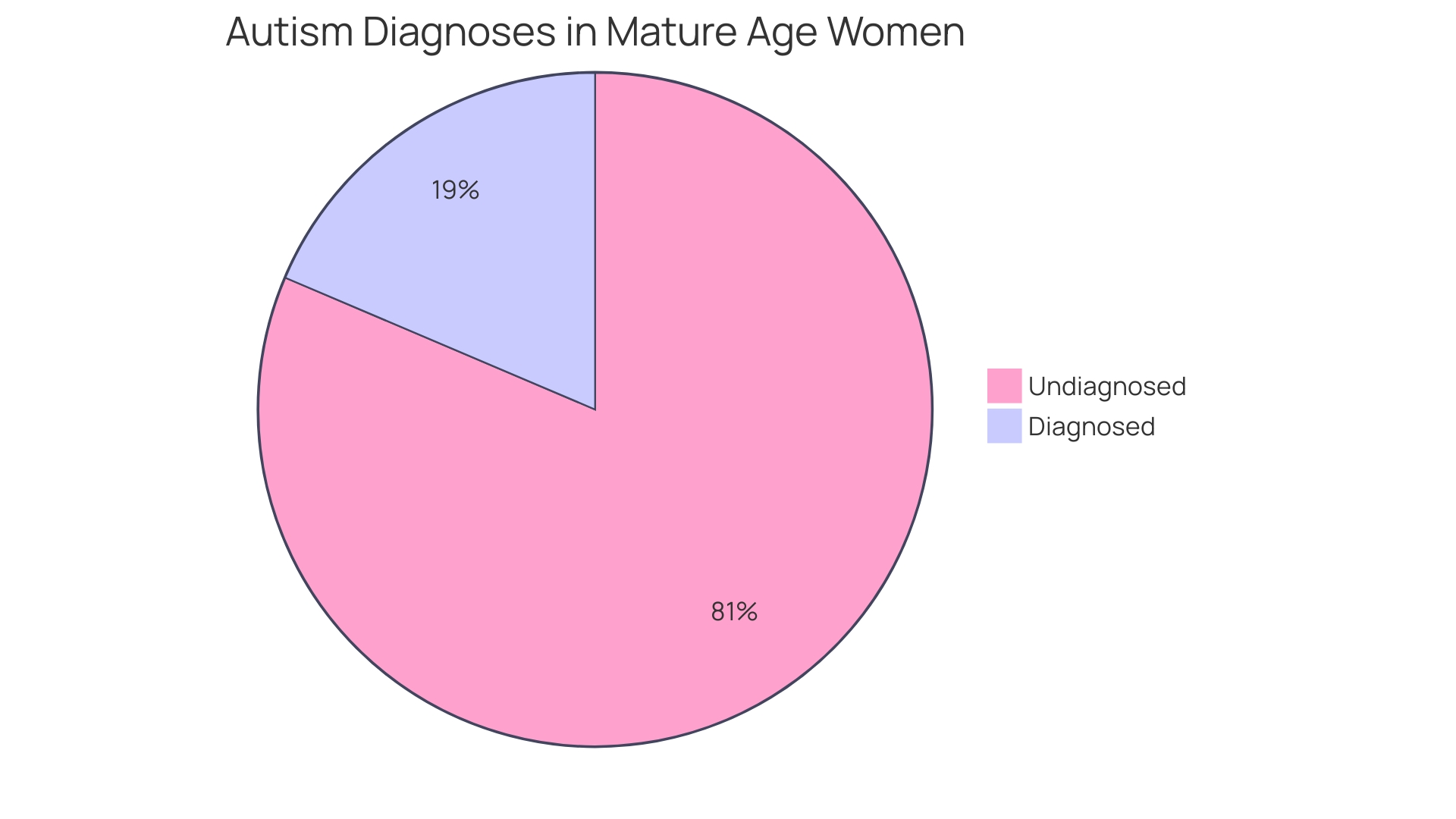
Difficulties in Social Interactions
Comprehending the distinct difficulties that women on the autism spectrum encounter in interpersonal environments is crucial for promoting their welfare and integration. Adult women with autism frequently face challenges in understanding cues and nonverbal communication, which can result in feeling overwhelmed in interpersonal settings. Limited eye contact and challenges in decoding others' emotions are common as well. These characteristics may contribute to the complexities of forming and maintaining relationships.
Adopting an intersectional perspective, as emphasized by Crenshaw's theoretical framework, enables us to understand the diverse experiences of women with autism, taking into account the intersection of gender, race, class, and disability. This understanding can lead to more effective, customized support strategies. The idea of disguising, or the attempt to hide traits associated with autism to fit in with societal expectations, is especially prevalent among women with autism, especially as they get older. This camouflaging can be exhausting and can exacerbate the difficulties they face.
The experiences shared by individuals like Sam Wolfe, an autistic adult, illustrate the challenges during significant life transitions, such as moving from high school to college or entering the workforce. These critical points can be even more taxing due to the added layer of managing sensory sensitivities, adhering to neurotypical social norms, and navigating executive functioning challenges.
Heartbreaking stories, like that of Zoe who had multiple hospital admissions and tragically lost her life, underscore the dire need for mental health services to better understand and support individuals with ASD. The misdiagnosis and lack of adequate aftercare she experienced are sobering reminders of the consequences of inadequate support.
Furthermore, research conducted by Braxton Hartman and his father Lorne aims to change the perspective from a focus on deficits to one that acknowledges the potential strengths. Their work examines how individuals with autism may be less influenced by others in morally difficult situations, indicating distinct benefits in social interactions.
Statistics indicating that 1 in 45 adults in the U.S. are diagnosed with autism spectrum disorder illustrate the prevalence of autism among adults, many of whom may have gone undiagnosed or misdiagnosed. It's important to recognize the strengths of individuals with autism and to build trust and understanding in therapeutic or supportive settings.
In all, by considering these insights and experiences, we can foster a more empathetic and informed approach to supporting women with autism, helping them to navigate their social worlds with confidence and the resources they need.
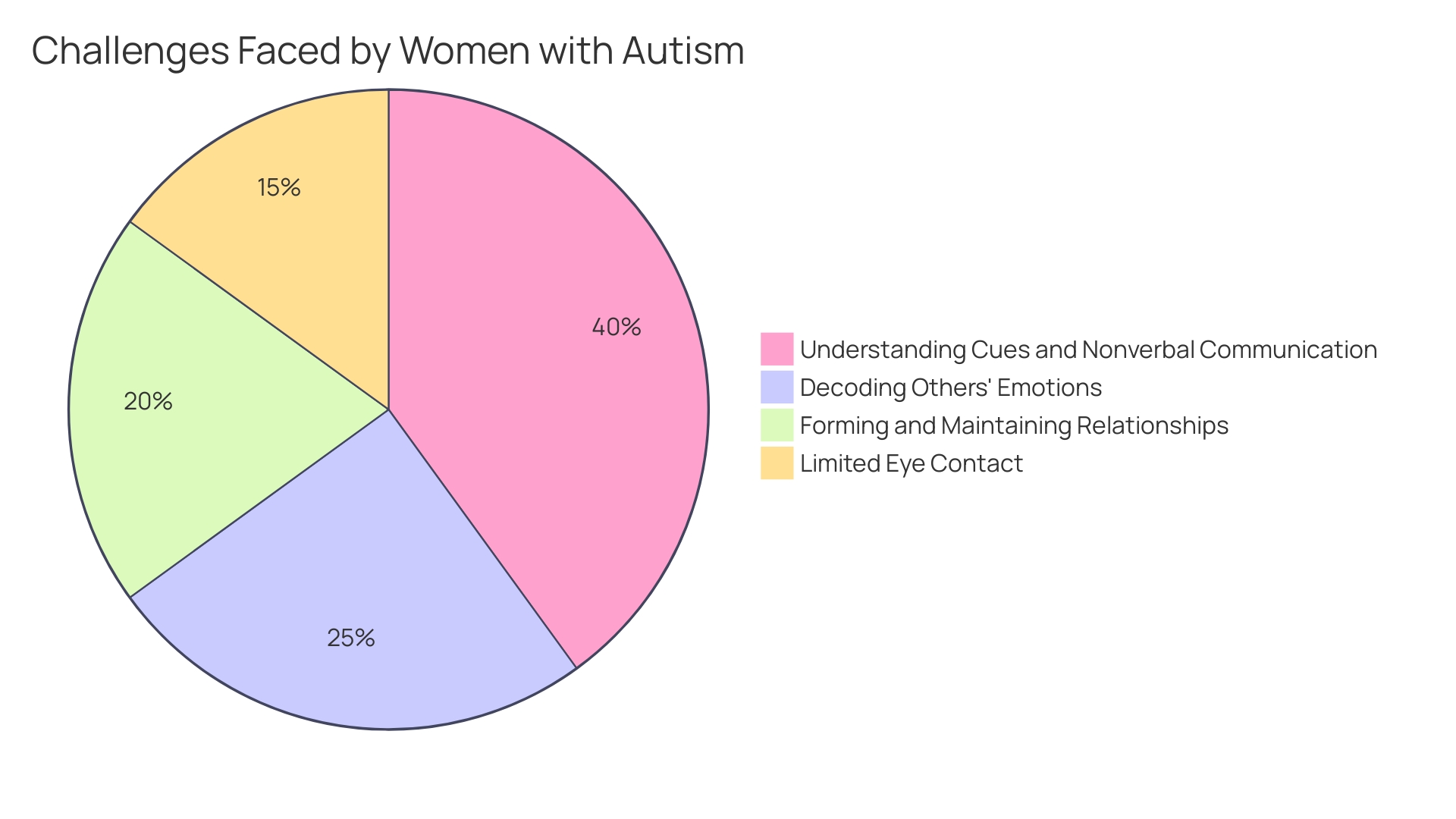
Communication Differences
Grown women with a certain developmental disorder may encounter specific communicative challenges, such as starting or sustaining a conversation, which is often worsened by a inclination to interpret language literally. They might speak with an atypical pattern, using a formal tone or a limited range of intonation, which can make understanding nuances like sarcasm or humor particularly difficult. The intricacies of communication, which are naturally navigated by neurotypical individuals, often represent significant hurdles for women on the autism spectrum. This can lead to misunderstandings about their social abilities, especially as many women on the autism spectrum have developed considerable skill in imitating social behavior, effectively hiding their autism to align with societal expectations. This camouflaging, while a testament to their adaptability, can result in their struggles being underestimated or overlooked. An intersectional approach reveals that these challenges are further complexified by the interplay of gender, race, class, and disability. In light of the vital role communication plays in personal and professional settings, recognizing and accommodating the distinctive communication styles of women on the autism spectrum is crucial. Developing strategies that acknowledge their strengths and preferences ensures a more inclusive environment, where direct and unambiguous interaction is the norm, and individuality is respected.
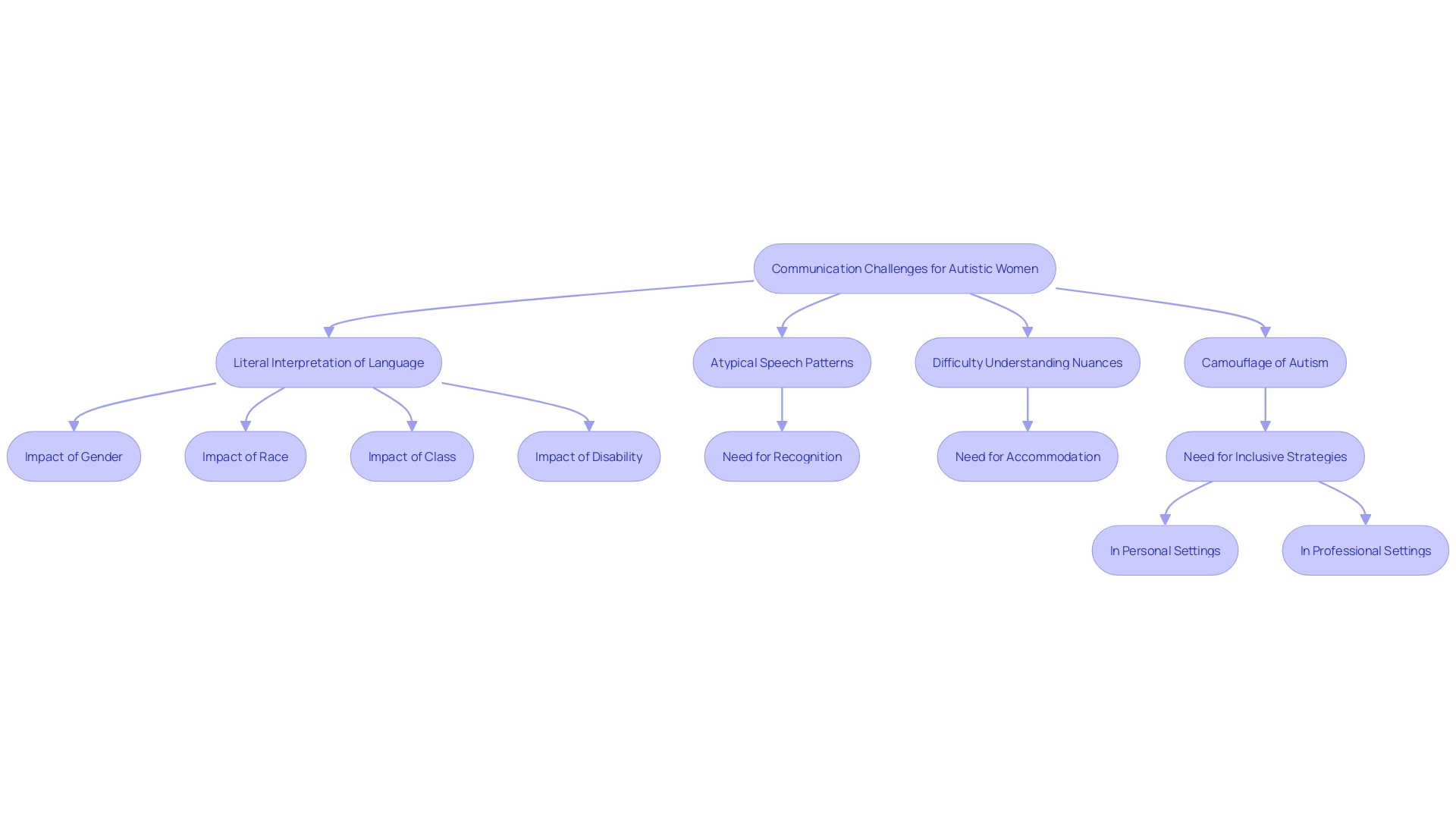
Repetitive or Ritualistic Behaviors
- Individuals may exhibit repetitive behaviors like hand-flapping or rocking, which can be indicative of a need for consistency or response to stress.
- Adherence to specific routines or rituals may be rigid, with significant distress experienced if these routines are disrupted.
- Sensory sensitivities are common, with certain sounds, textures, or lights potentially leading to overwhelming experiences or discomfort.
- A pronounced passion for particular subjects or objects can be seen, where one may delve deeply into these interests, often with remarkable expertise and focus.
Seeking a Diagnosis: Next Steps
Autism Spectrum Disorder (ASD) is a neurological and developmental condition that becomes apparent in early childhood and is an intrinsic part of an individual's identity, affecting how one perceives and interacts with the world. Recognizing this, the process of identifying as having autism varies among individuals. While medical assessments can offer definitive diagnoses, the autistic and neurodivergent community recognizes self-diagnosis as valid, given the challenges and limitations of the medical testing model. Many individuals find that seeking a formal diagnosis yields inconclusive results and may not be necessary for the support they require.
Nonetheless, some individuals, like Heather Florio, diagnosed at 41, find that an official diagnosis can be transformative and lead to self-acceptance. For those considering assessment, a journal of experiences and difficulties related to a specific developmental disorder can be a useful preparation for comprehensive evaluations, which typically include interviews and questionnaires.
With one in forty-five adults in the U.S. diagnosed with ASD and many more potentially undiagnosed or misdiagnosed, recognizing the signs of autism is crucial. The core characteristics include challenges with social communication and restricted, repetitive behaviors. However, it's important to note that ASD can vary greatly in its presentation, from mild to severe, and each individual's experience is unique.
For early identification and intervention, organizations like The Autism Community in Action (TACA) emphasize the benefits of timely diagnosis and treatment, such as behavioral therapy. Early treatment is associated with better outcomes, but current diagnostic methods often fall short, delaying crucial support. Innovations like NeuroQure's technology aim to bridge this gap by enabling early detection, potentially within weeks of birth, which is particularly vital for families with an increased genetic risk of ASD.
It is crucial to comprehend the varied requirements of individuals with autism, acknowledging their abilities and building trust. While therapeutic needs for conditions like anxiety and depression may not differ significantly from those without autism, the approach to care and communication might require adjustments to better serve individuals on the spectrum.
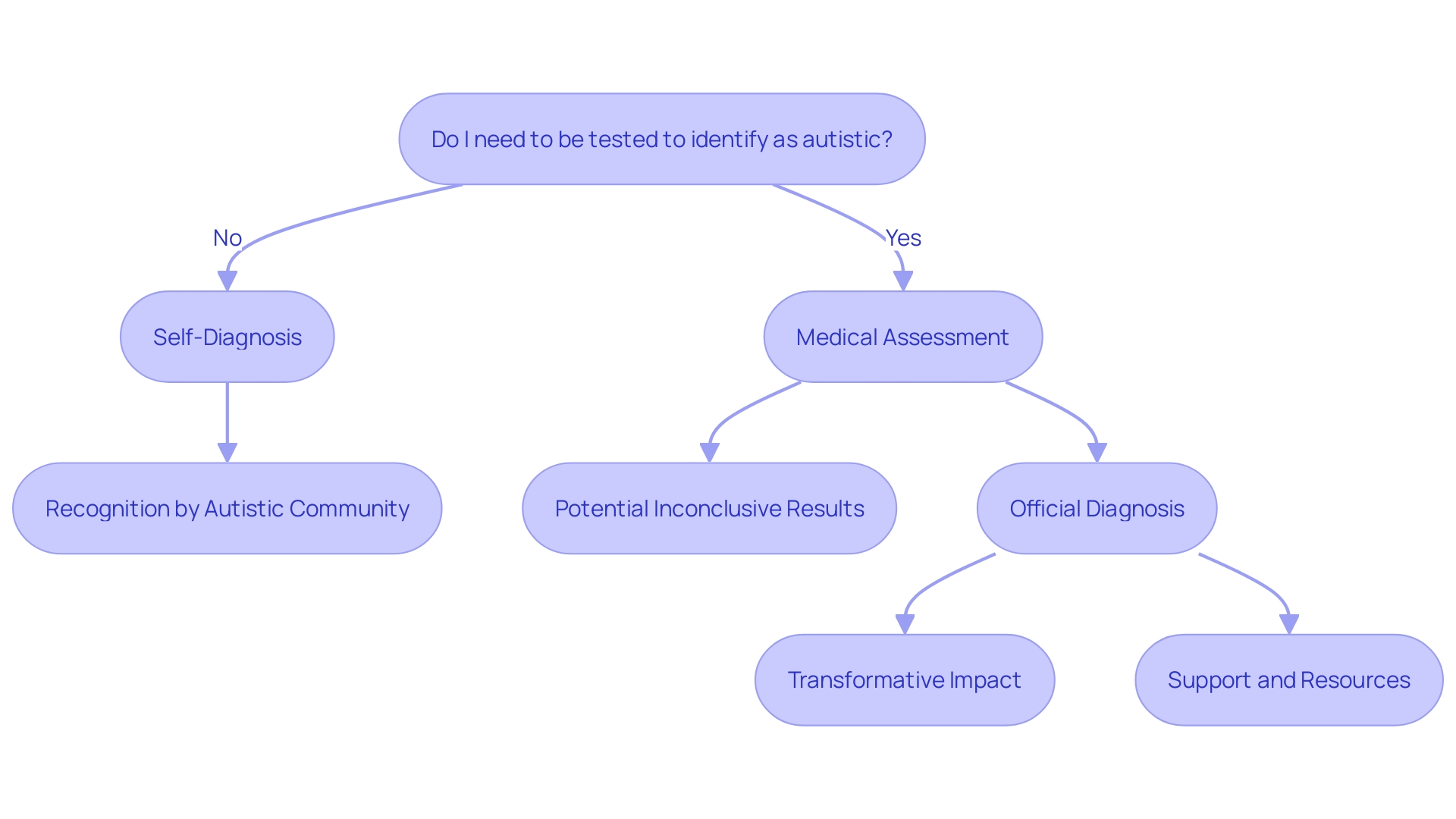
Coping Strategies for Adults with Autism
Realizing that you are on the spectrum later in life can be a transformative realization, unlocking opportunities for self-awareness and promoting personal growth. For those managing life with a neurodevelopmental disorder, a variety of supportive strategies and treatments are available to enhance daily living.
Adults with autism, who make up approximately 1 in 45 adults in the U.S., often exhibit distinctive characteristics such as social communication difficulties and repetitive behaviors. Identifying these indicators can be a crucial initial stage towards receiving assistance and embracing one's identity as someone with autism.
Educational treatments, such as the Treatment and Education of Autistic and Related Communication-Handicapped Children (TEACCH) approach, cater to the unique learning styles of autistic individuals. TEACCH emphasizes the importance of consistency and visual learning in the classroom, offering strategies like visual schedules and structured learning environments that can significantly improve educational outcomes.
Furthermore, treatments for ASD aim to lessen symptoms that affect daily life and overall well-being. These non pharmacological interventions can occur across various settings, including education, health, and community spaces, extending their benefits into adulthood. With the appropriate support, individuals with autism can flourish, engaging socially and contributing to their communities in meaningful ways.
The progression into maturity and after completing secondary education can indeed be demanding, but with efforts like those led by Harvard Medical School, there is an increasing acknowledgement of the requirement for ongoing services and medical care for individuals with autism. Such initiatives aim to guarantee equal involvement in all aspects of life, aligning with the goal of creating a fair race for all children and individuals with disabilities, as envisioned by the late Dr. David (Dan) R. Offord.
In essence, understanding and working with the specific needs of autistic adults, recognizing their strengths, and building trust are fundamental. As they progress through different life stages, the provision of tailored resources and interventions plays an integral role in fostering their mental health, social participation, and overall quality of life.
Self-Care and Emotional Well-being
- For individuals on the autism spectrum, establishing a routine that includes self-care can be both a respite and a powerful tool for managing wellbeing. Simple acts such as indulging in a favorite hobby, practicing meditation or mindfulness, and engaging in regular physical activity can have profound effects on mental health. Therapy or counseling, designed to target the distinct encounters of grown individuals with autism, is also crucial. These therapeutic interventions can help in coping with anxiety or depression, offering a space to explore personal challenges in a supportive environment. Building a network of compassionate friends, family members, and professionals who recognize the specific needs of individuals on the autism spectrum is another cornerstone. This support network can provide the necessary understanding and assistance, creating an environment where autistic adults can thrive.
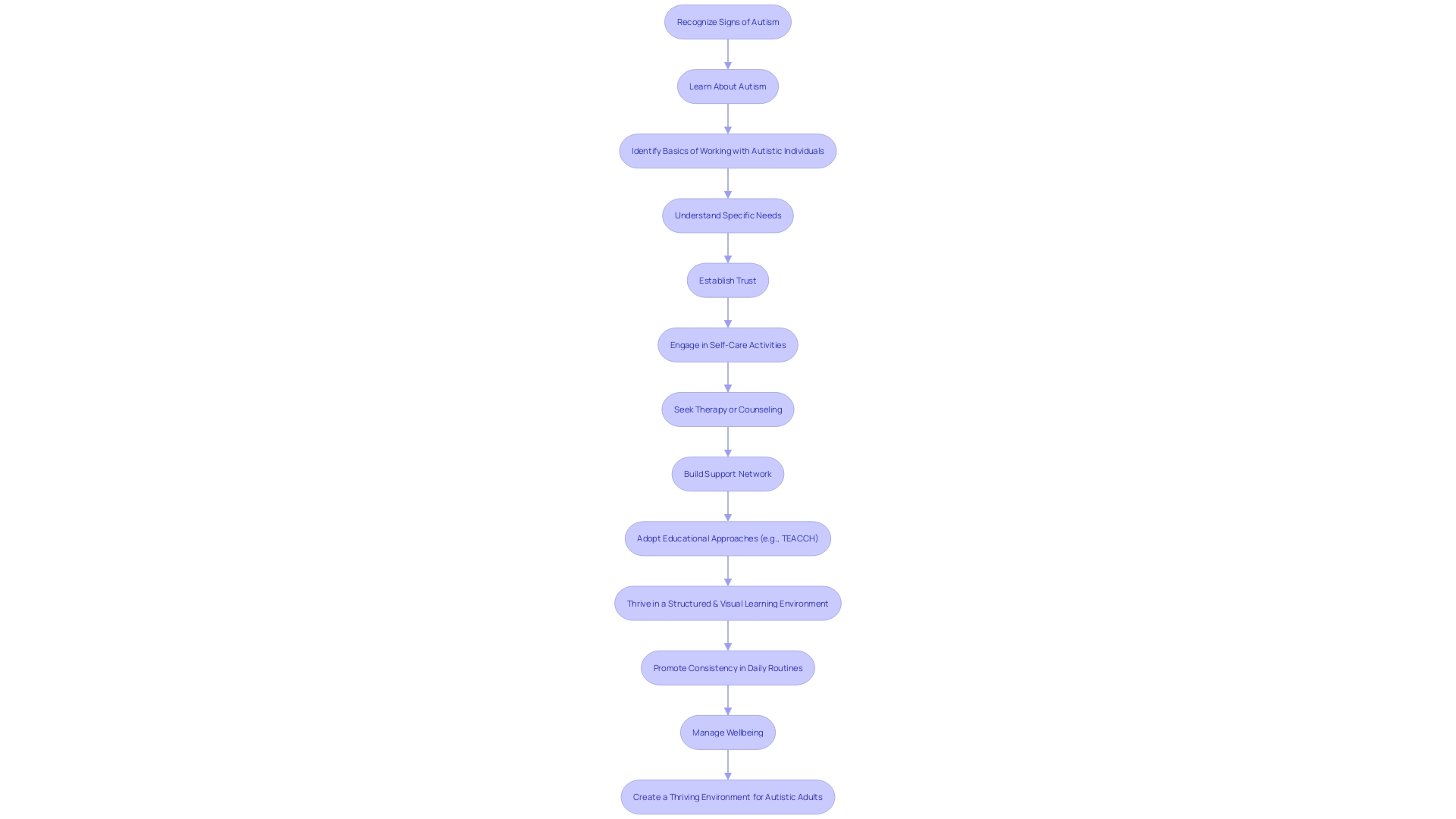
Developing Social Skills
Participating in workshops or group sessions designed to enhance interpersonal abilities can be a positive step for individuals seeking to improve their interactions. Such environments often provide a supportive space to practice new skills without fear of judgment. - Enhancing interpersonal abilities through practical implementation in real-life situations can promote the consolidation of these skills, which is crucial for significant advancement. - Actively seeking out and participating in group activities or clubs that align with personal interests can foster a sense of belonging and provide a platform for practicing social engagement in a context that feels natural and enjoyable.
Managing Sensory Sensitivities
- To aid in managing sensory overload, it's valuable to discern individual triggers and devise coping strategies. For some, this may involve utilizing sensory tools like noise-canceling headphones or tactile fidget toys that provide a sense of calm.
- Establishing a sensory-friendly environment is equally crucial, both at home and within professional settings. This includes creating spaces that cater to sensory needs, such as quieter, well-lit areas with minimal distractions.
- Embracing these approaches not only enhances daily functioning for those with sensory sensitivities but also fosters an inclusive atmosphere that acknowledges and respects neurodiversity. Jefferson Health's Honickman Center exemplifies this commitment through its design, offering a serene oasis with natural elements designed to soothe and de-escalate stress for individuals with conditions like autism and ADHD.
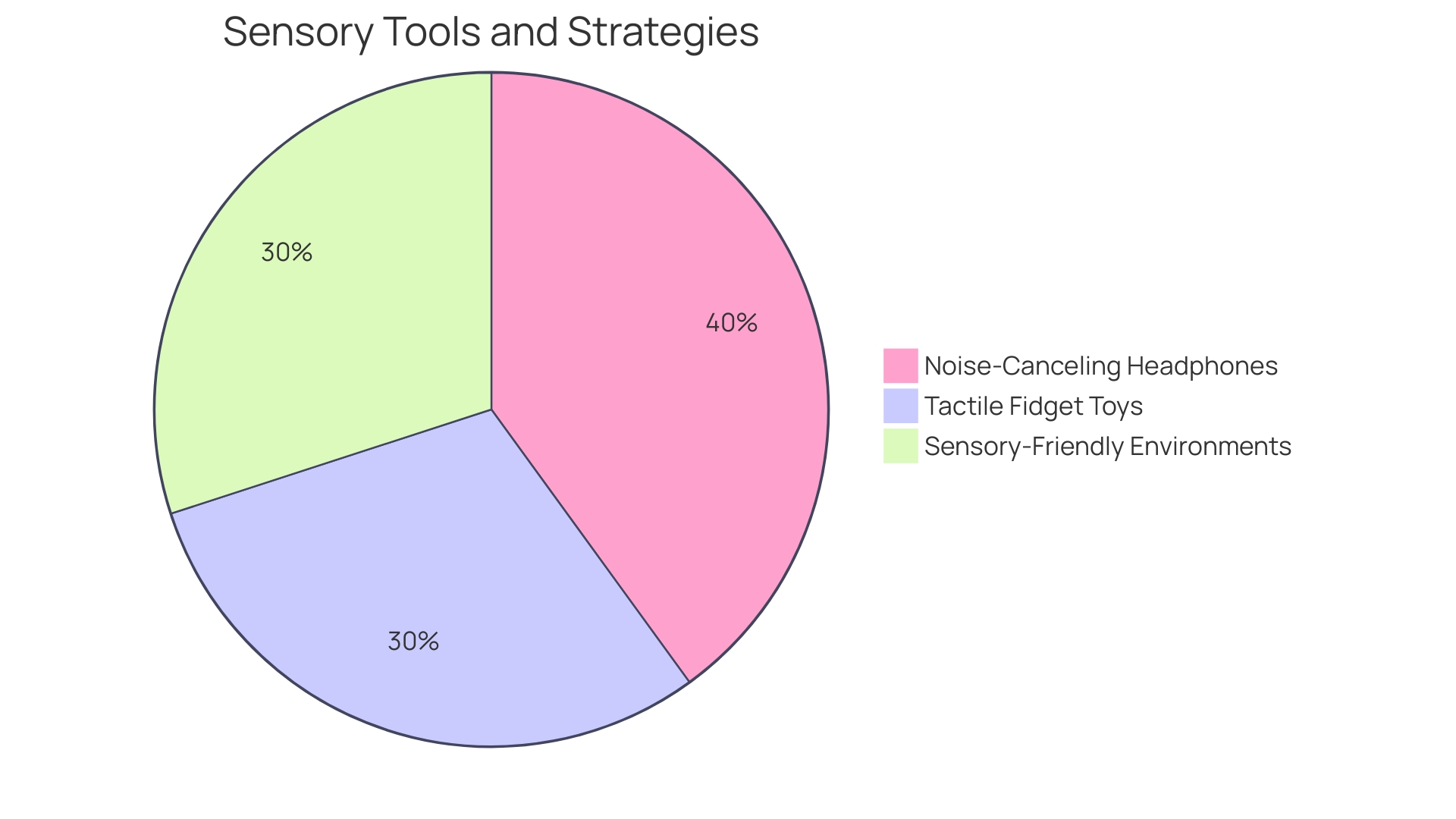
Building Independence and Life Skills
- Collaborating with a vocational coach can provide valuable guidance for individuals navigating their career paths, particularly for those looking to integrate their unique skills and experiences, such as a transition from dog behavior modification to wildlife conservation. Success stories, such as submitting research to a peer-reviewed journal without university affiliation, illustrate the power of strategic career development.
- Establishing achievable objectives is crucial, and breaking these goals into smaller, attainable steps can lead to significant accomplishments over time, much like the efforts seen in community health care initiatives that address systemic challenges and strive for practical solutions.
- Tailoring strategies to enhance time management and organization is essential, especially for adults facing challenges like time blindness, which affects one's perception and management of time due to neurological differences. Adopting personalized techniques can help in successfully handling daily tasks and long-term responsibilities.
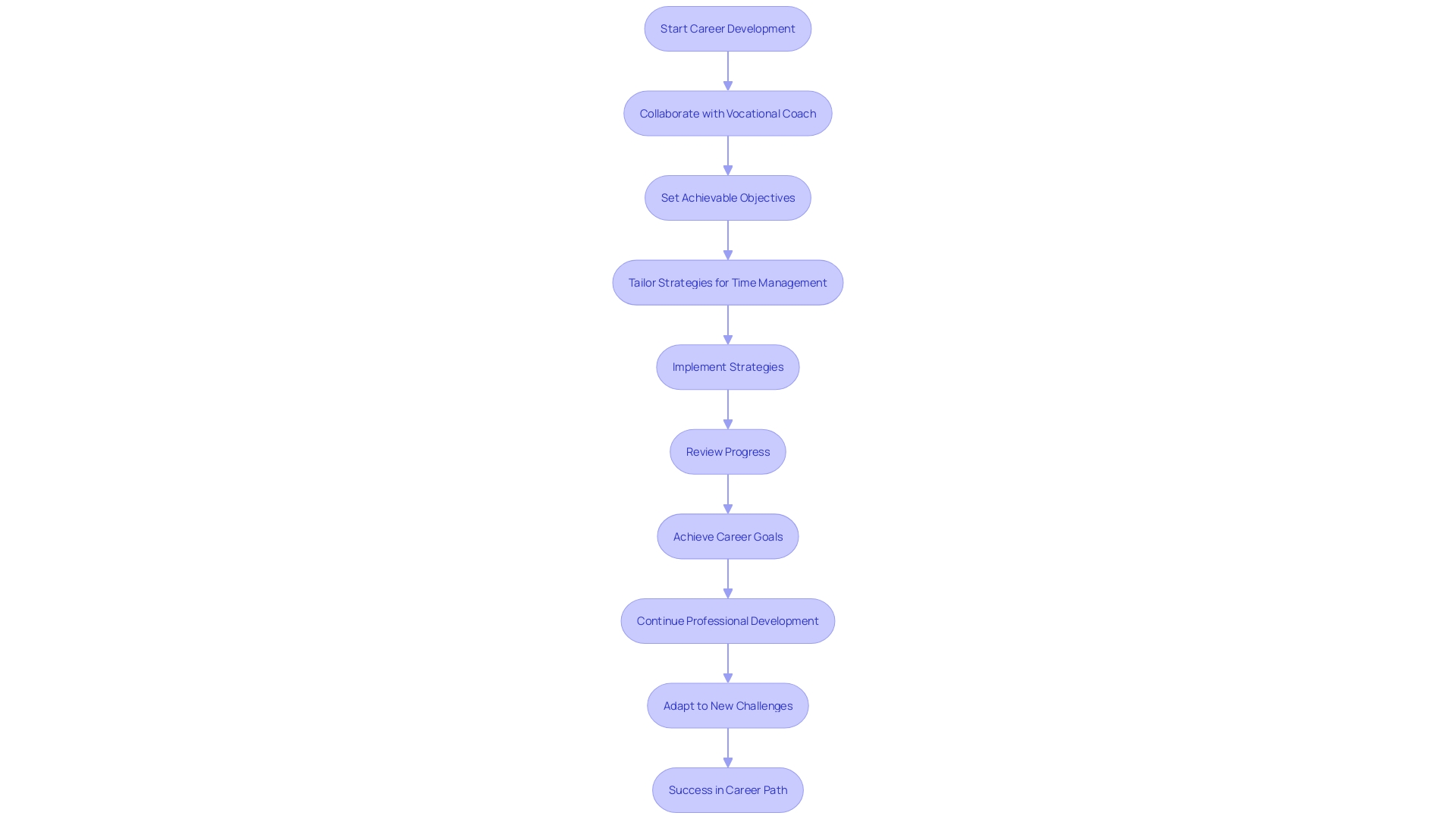
Conclusion
In conclusion, recognizing the signs of autism in adult women is crucial for their well-being and accessing appropriate support. The prevalence of autism in adults is significant, with 1 in 45 adults in the U.S. diagnosed with ASD. Misinformation on social media can add to the confusion and stigma surrounding autism, so it's important to seek accurate information from reliable sources.
Understanding and addressing the health concerns of autistic individuals is integral to managing the condition. Navigating social interactions can be complex for autistic women, and recognizing their unique communication styles is crucial for fostering an inclusive environment.
Seeking a formal diagnosis is a personal choice, and self-diagnosis is accepted within the autistic community. Supportive strategies and treatments are available to enhance daily living for autistic adults, including educational treatments and nonpharmacological interventions.
Self-care, therapy, and building a supportive network are essential for the emotional well-being of autistic adults. Developing social skills, managing sensory sensitivities, and building independence and life skills are also important aspects of their overall well-being.
By recognizing and addressing the specific needs of autistic women, we can foster a more empathetic and informed approach to support them. Through understanding, acceptance, and the provision of tailored resources and interventions, we can help autistic women navigate their challenges and thrive in all aspects of life.




